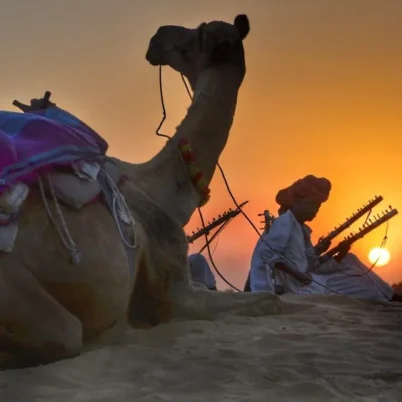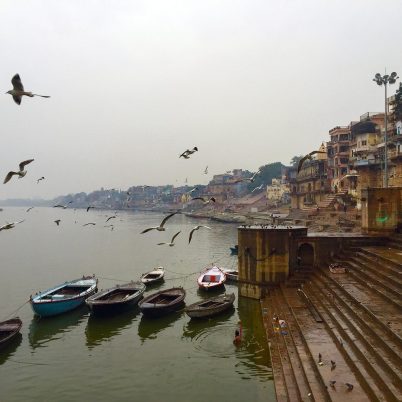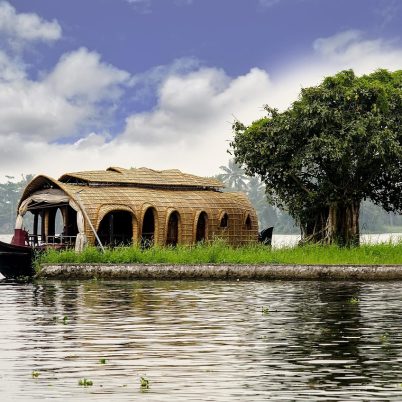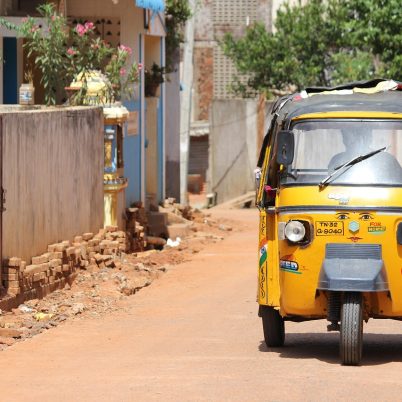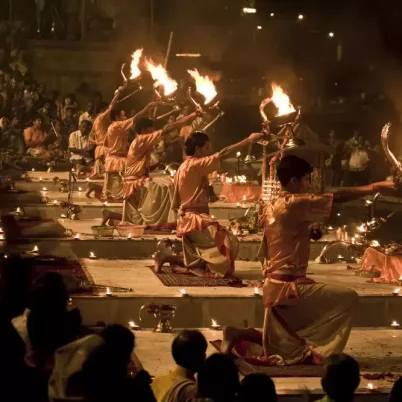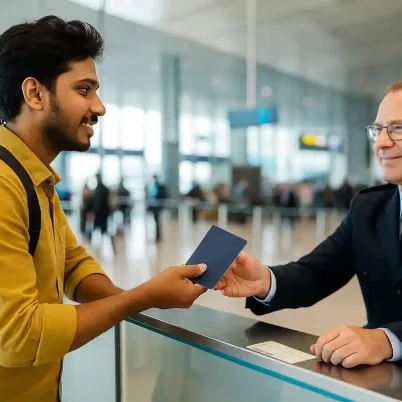
It can be a daunting task to plan a trip to India for foreigners. A beautiful, diverse country, India can often be chaotic and overwhelming. Planning a trip here can feel like a lot of work, especially if you are traveling to India for the first time. Here is a guide to help you plan your trip to India better!
Cover the basics
The first step while planning a trip to India is to ask the important questions – when to go, where to go, how long to stay, and how much does it cost for a trip to the country. Once you know what you want out of this trip, it will make your task considerably easier.
When to go to India?
India is largely divided into three seasons – winter, summer, and monsoon. While the country is considered to be hot and humid, the climate differs from one region to another. Before planning your trip to India, decide when you are planning to go.
October to February (Winter season)
This is the winter season in India, and most of the country has a pleasant climate. This is the best time to visit India. It is also a great time to experience winter activities and snow in the northern regions like Kashmir, Himachal Pradesh, and Uttarakhand.
March to June (Summer season)
Summer season in the country, March to June can be intensely hot and humid. It is not really ideal for sightseeing or exploring India, unless you can bear the heat. It is, however, a great time to visit the hill stations of the country, as well as the Himalayan regions of Leh-Ladakh, Himachal Pradesh, Uttarakhand, and the northeast.
July to September (Monsoon season)
This is the monsoon season in India. It is not a preferred season among tourists due to the heavy rains, flooding, delays, and cancellations. However, India is at its most beautiful in the monsoon season, with lush green landscapes and a breezy atmosphere. You can still visit areas with comparatively low rainfall, such as Rajasthan, Ladakh, and Spiti Valley. It is a good time for budget travelers, since off-season means discounts on tickets and accommodations!
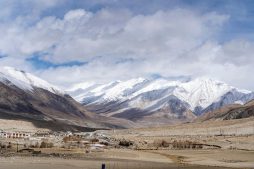
How long to spend in India?
India is a vast country, not just in size and population, but also in terms of diversity. There is so much to do here that it can be overwhelming for any traveler. One thing to remember is that you will not be able to cover the whole country in one trip. So think about how much time you want to spend here and then focus on a few regions accordingly.
Ideally, you should spend a minimum of two weeks in India. While it is possible to visit the country for a week, it will be a hectic trip unless you are planning to focus on just one small region. Two to three weeks are perfect to explore 2 to 3 regions properly, while spending one to three months can be ideal to fully explore many different regions and cultures of India.
Where to go in India?
It is impossible to see all of India in one go. So don’t try to cram a lot of places in your itinerary and rush through the trip. Instead, focus on two or three regions depending on how long you are visiting for, and immerse yourself in all the varied experiences that the beautiful country provides. Some of the most popular destinations among first-time travelers are the Golden Triangle, Rajasthan, Kerala, and Goa. These regions offer the essence of India in the best way.
Golden Triangle
Covering Delhi, Agra, and Jaipur, the Golden Triangle is the simplest route to experience a good chunk of India in a short time. This route offers beautiful landscapes, historic structures like Taj Mahal, Red Fort, and Hawa Mahal, and many different regions, cultures, and cuisines in one trip. Two weeks is sufficient to explore the Golden Triangle.
Rajasthan
The desert state of India has much to offer, and the only way to do it justice is to explore it in depth over 2 to 3 weeks. Visit the Pink City of Jaipur, Blue City Jodhpur, and the City of Lakes Udaipur. Explore the sand dunes of Jaisalmer, Ranthambore National Park, and more.
Goa
Goa is a small beach state that you can cover in one week for a relaxing holiday, or club it with Mumbai, Gokarna, or Hampi over two weeks. The laid-back state offers a perfect vacation if you want to get away from the chaos of India. Spend your days on the beaches, indulging in water activities, exploring the old churches and beautiful streets, and gorging on the local cuisine.
Kerala
The tranquil backwaters of Kerala are quite popular among tourists. Lush green landscapes, tea plantations, Ayurvedic spas, and a rich culture and heritage make this southern state a must-visit for foreigners.
These are just a few of the regions to visit in India. If you are looking for more options or some offbeat regions, we got you covered!
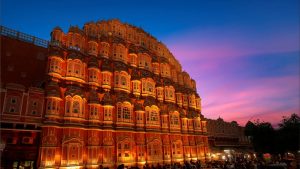
How much does a trip to India cost?
India is one of the more affordable countries in the world, and caters to all types of budgets. The cost of a trip to India depends on how long you plan on staying in the country, your travel style, budget, accommodation type, the regions you want to explore, and the experiences you wish to take.
An average mid-range two-week trip to India with a few experiences can cost you anywhere between $500 – $1500, excluding flight costs.
Do I need a visa?
Yes, most foreigners require a visa to enter India. There are a few exceptions to it, such as residents of Nepal and Bhutan, Overseas Citizen of India (OCI) cardholders, and Maldives citizens for tourism purposes.
All other tourists need a visa for India. An e-Visa is a great option for many countries. You can apply for a visa up to 120 days and no less than 4 days prior to your trip. Check out this blog for more details about the visa process for India.
Plan your itinerary
Once you have answered your basic questions, you can start planning your itinerary.
Firstly, make a list of all the destinations you want to visit and the experiences you want to enjoy. Think about the geographical factors as well – do you want a tropical beach vacation or do you want to be in the mountains? Do you want to see the top attractions, or go more offbeat? Shortlist it so that it suits your requirements.
Ideally, spend at least 2 to 3 days in one place to truly experience it. Plan the length of your trip accordingly. We would recommend covering 2-3 regions in one 2 to 3 week trip.
Then decide how you want to get around the country, especially if you are covering multiple regions. Domestic flights are affordable and quicker if you want to cover long distances, while the Indian railway network is extensive and covers many remote locations. For intercity travel, buses, taxis, and auto-rickshaws are a good option.
Start booking
Once you have your itinerary in place, it is time to start booking everything. Ideally, bookings should be made at least 3 to 4 months before your trip so as to get the best deals and choices.
Tickets
Book all your transportation beforehand, both flights and trains (if you plan on traveling by train). Many countries offer direct flights to New Delhi, Mumbai, Chennai, and Bangalore airports in India.
If you plan on traveling by train within India, you need to book early on the IRCTC website. Here is a detailed guide to Indian railways and how to book a train ticket.
Accommodation
Where to stay depends on your budget and comfort level. India has a range of options to choose every budget. You can choose a hostel, Airbnb, hotel, or a homestay among other options. Here is a guide to help you choose between an Airbnb and a hotel in India.
Activities
Popular activities and experiences can get booked quickly in India, especially if you are traveling during peak season. Of course, not every activity needs to be pre-booked, but experiences like wildlife safaris, Pushkar Camel Fair, Holi, and Diwali celebrations, visiting the Taj Mahal, and houseboat stays need to be booked beforehand.
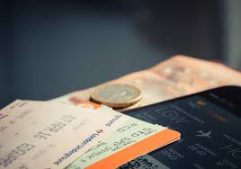
Start packing
You need to start packing for your trip 1 to 2 weeks before, in case you need to get any last-minute things or documents.
Essentials to carry
Carry your passport, visa, travel insurance, basic first aid, phone, charger, adapter, camera, identity card, license, etc. Also carry plenty of cash. While India is becoming big on digital payments, cash still remains the most common form of payment. Check this blog for a detailed list of what to pack.
What to wear
Pack your bags depending on the season, climate, and region. A large part of India is hot and humid, so carry loose, breathable clothes. The country is also pretty conservative, so make sure to pack clothes that cover your shoulders, chest, and thighs, especially if you plan on visiting religious places or remote villages.
If you are visiting a colder region or during the winter season, carry warm woollens and layered clothing. For places with snow, carry winter boots, gloves, scarves, and woollen caps.
For the summer season, wear light cotton and linen. Don’t forget to carry sunscreen, sunglasses, and a hat or a cap.
For the monsoons, carry extra clothes and outfits that dry quickly. Also carry an umbrella or a raincoat and appropriate footwear, along with a mosquito repellent or bug spray.
Largely, India is a hot and humid country, so carry loose, breathable clothes.
Check out this blog to understand what to wear in India.

Did you find this guide helpful? Let us know! And if you do not feel like doing any of this, contact us! At India Someday, we curate personalized trips to India based on your likes and requirements. Let us do all the work and you can sit back and enjoy your trip! Contact us and together we can plan the perfect trip to India for you!
Frequently Asked Questions
You can get around India by plane, trains, bus, car, auto-rickshaw, boat, jeep, and motorbikes, depending on your route and distance.
A foreigner in India on a tourist visa can stay for a maximum of 180 days in the country.
You need a minimum of 2 weeks and at least 4 weeks to explore the country at a relaxed pace. You can visit 2 to 3 regions in depth, or combine North India and South India, or visit offbeat locations in the country.
helping you travel your way
Everything you need to know about India is here We have tried writing about everything you may need help with for your trip to India, If you need help in planning a trip to India Get in touch with us to to plan your trip of a life time.



